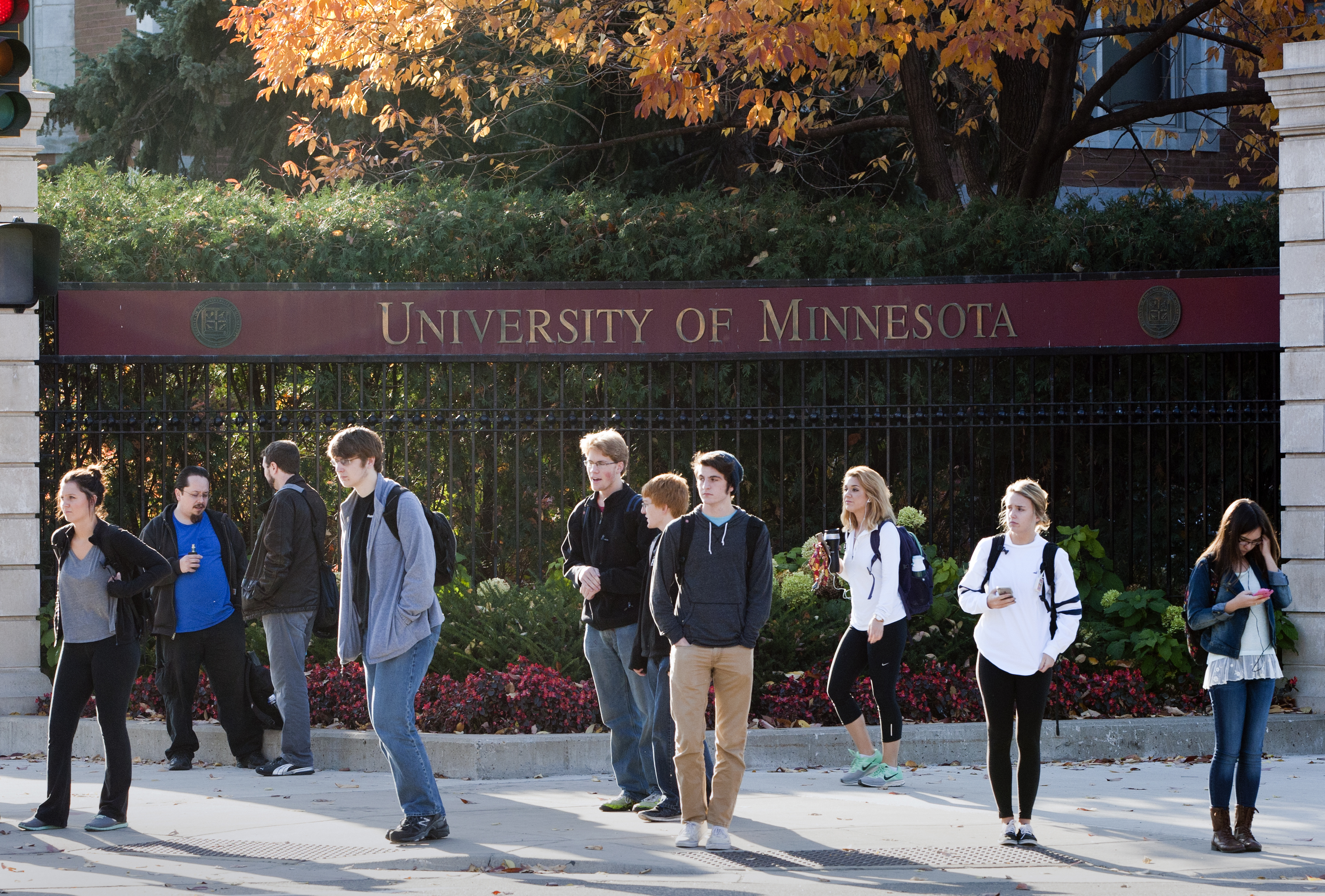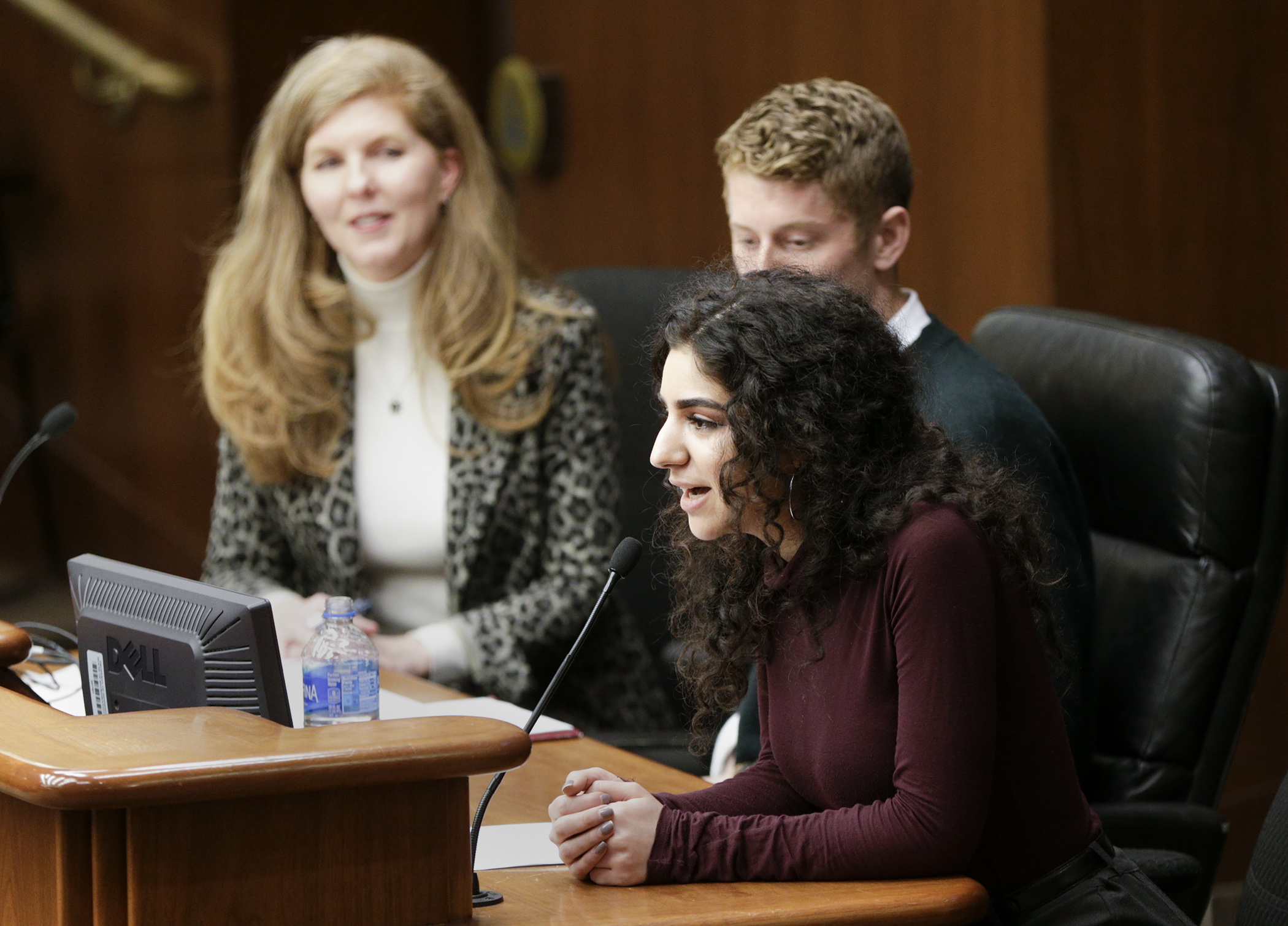U of M seeks $10m in bid for 2018-19 tuition freeze

While tuition rates continue to skyrocket across the nation, the University of Minnesota — with the help of lawmakers — have kept tuition rates relatively steady, averaging annual increases of 1 percent or less for the past six years.
To provide continued tuition relief to resident undergraduates, HF3899, sponsored by Rep. Regina Barr (R-Inver Grove Heights), would appropriate $10 million to the university to freeze their tuition for the 2018-19 school year.
Approved, as amended, Tuesday by the House Higher Education and Career Readiness Policy and Finance Committee, it now awaits action by House Ways and Means Committee. Its companion, SF3393, sponsored by Senate President Michelle Fischbach (R-Paynesville), awaits action by the Senate Higher Education Finance and Policy Committee.
University President Eric Kaler said that over the past six years resident undergraduates at all five campuses have seen the smallest tuition percentage increases in 58 years recently due in large part to savings they obtained through administrative cuts.
“We are on track to reduce our administrative costs by $90 million and reallocate those funds to our core mission of teaching, research and outreach,” he said.
 University of Minnesota student Tala Alfoqaha testifies March 27 before the House higher education committee in favor of HF3899. Sponsored by Rep. Regina Barr, left, the bill would provide university resident tuition relief. Photo by Paul Battaglia
University of Minnesota student Tala Alfoqaha testifies March 27 before the House higher education committee in favor of HF3899. Sponsored by Rep. Regina Barr, left, the bill would provide university resident tuition relief. Photo by Paul BattagliaKaler added that it’s important that the $10 million be a recurring appropriation to cover ongoing cost increases such as salaries and fringe benefits, compliance requirements and utilities. The $10 million would increase the university’s total base funding appropriation for 2018-19 from $650.8 million to $660.8 million. University officials estimate the funding will offset cost increases by $200-$250 per student, for approximately 31,500 students.
Freshman Tala Alfoqaha from Eden Prairie said that she ultimately chose to attend the university over schools like the University of Wisconsin, Madison or University of Michigan due in large part because it was the most affordable. She said that while she’s extremely happy with her choice to attend the Twin Cities campus because of its academics and extracurricular activities, the cost was still a big factor.
“After talking to my classmates and colleagues and learning about their motivations for attending, I know that my experience is not unique, it is in fact the norm,” she said. “We know that the wisdom and knowledge that we gain in college can’t be reduced to a price tag, but it is precisely this price tag that may prevent potential contributors to the vibrant and diverse community on campus from attending the university.”
Rep. Abigail Whelan (R-Ramsey) said she appreciates the bill’s mission, but questioned some of the university’s past financial management.
“Just a couple of years ago, in 2014, the university for example, was redirecting administrative savings into other top priority areas and those top priority areas did not include reducing tuition,” she said. “It just concerns me that it seems that while we all want to reduce tuition, where it’s at on the priority level, there seems to be some discrepancy.”
Kaler said that they aim to strike a balance between reducing the need for additional revenue, without sacrificing the quality of education and programming that the university offers.
“We worked very hard to reduce the need for additional revenue; that revenue comes either from the state or from tuition,” he said. “We do feel that the quality of what is obtained by a student at the University of Minnesota is very much worth the tuition that we ask them to pay.”
Minnesota State supplemental funding request
Sponsored by Rep. Bud Nornes (R-Fergus Falls), the committee chair, HF3638 would appropriate $10 million to be distributed by Minnesota State’s Board of Trustees amongst 30 of its campuses on a needs basis. It would also appropriate $21 million to replace its current student record system with a system called NextGen.
It was approved, as amended, and now awaits action by House Ways and Means Committee. Its companion, SF3671, is also sponsored Fischbach and awaits action by the Senate Higher Education Finance and Policy Committee.
Minnesota State’s current record system, ISRS, is used by nearly 400,000 people across every campus, including every faculty and staff member and every student, to track registration, payroll, generate transcripts and register for courses. It was developed over 20 years ago, using a combination of different programming language.
According to Scott Olson, president of Winona State University, it’s simply too outdated to meet system needs.
“I’m quite worried about what it means for students if we don’t do this,” he said. “There are no programmers being prepared today to program in that language, so when the last four or five that we have retire, there won’t be anyone left to improve or repair ISRS.”
Rep. Tony Albright (R-Prior Lake) asked what resources, time and money, it will take to get the system fully implemented, and expressed concern over large-scale computer system upgrades.
“You can appreciate my jaded skepticism with regard to any computer system upgrades with the likes of MNsure, MNLARS and now we’ve got NextGen,” he said.
Laura King, the system’s chief financial officer, said that the committee has already provided $4 million in base funding. King anticipates that this additional $21 million in base funding will cover the remainder of the project based on their current forecast.
“We expect it to take seven years because we’re going to be implementing it in waves,” she said. “This is an extremely large data system.”
Related Articles
Search Session Daily
Advanced Search OptionsPriority Dailies
Ways and Means Committee OKs proposed $512 million supplemental budget on party-line vote
By Mike Cook Meeting more needs or fiscal irresponsibility is one way to sum up the differences among the two parties on a supplemental spending package a year after a $72 billion state budg...
Meeting more needs or fiscal irresponsibility is one way to sum up the differences among the two parties on a supplemental spending package a year after a $72 billion state budg...
Minnesota’s projected budget surplus balloons to $3.7 billion, but fiscal pressure still looms
By Rob Hubbard Just as Minnesota has experienced a warmer winter than usual, so has the state’s budget outlook warmed over the past few months.
On Thursday, Minnesota Management and Budget...
Just as Minnesota has experienced a warmer winter than usual, so has the state’s budget outlook warmed over the past few months.
On Thursday, Minnesota Management and Budget...
